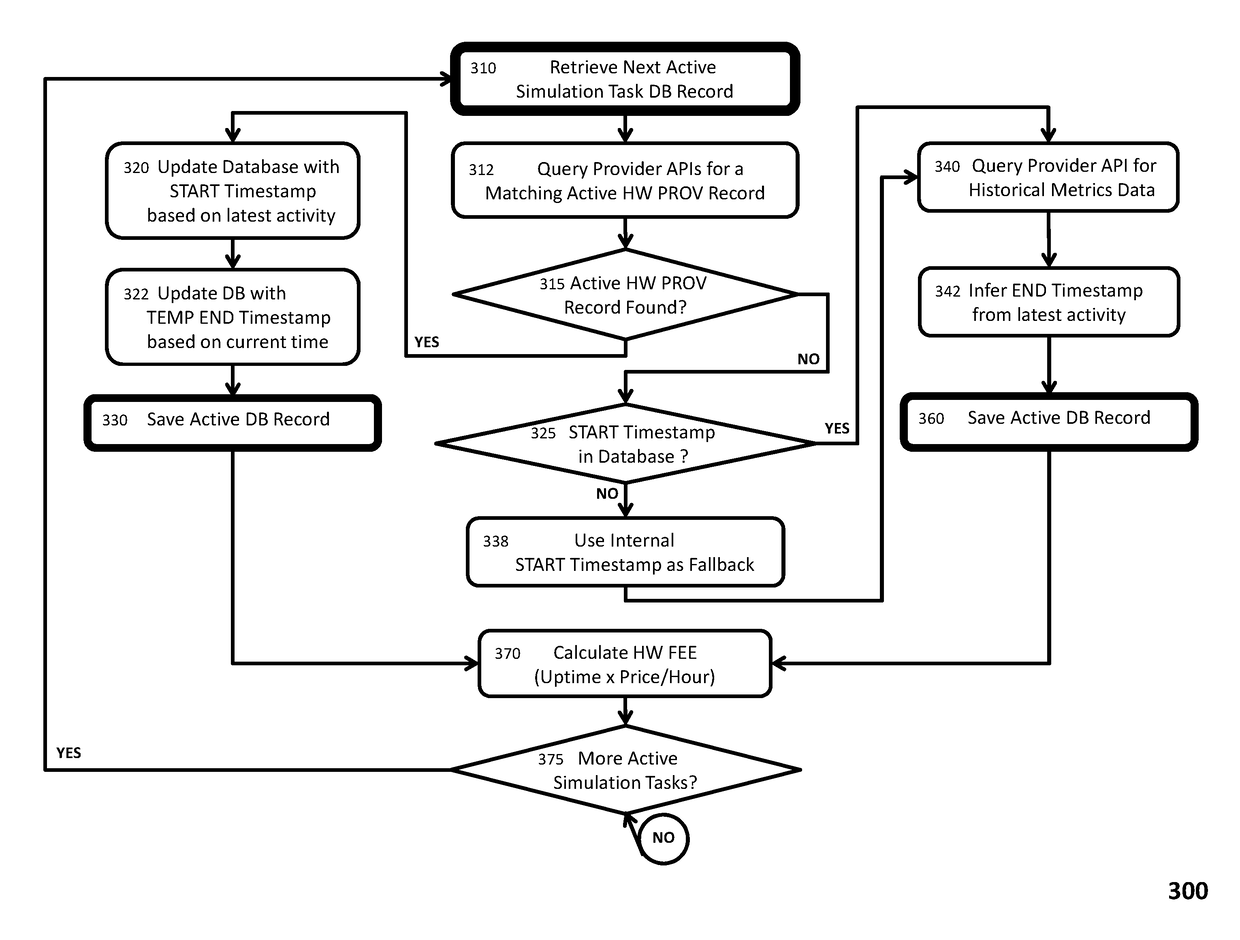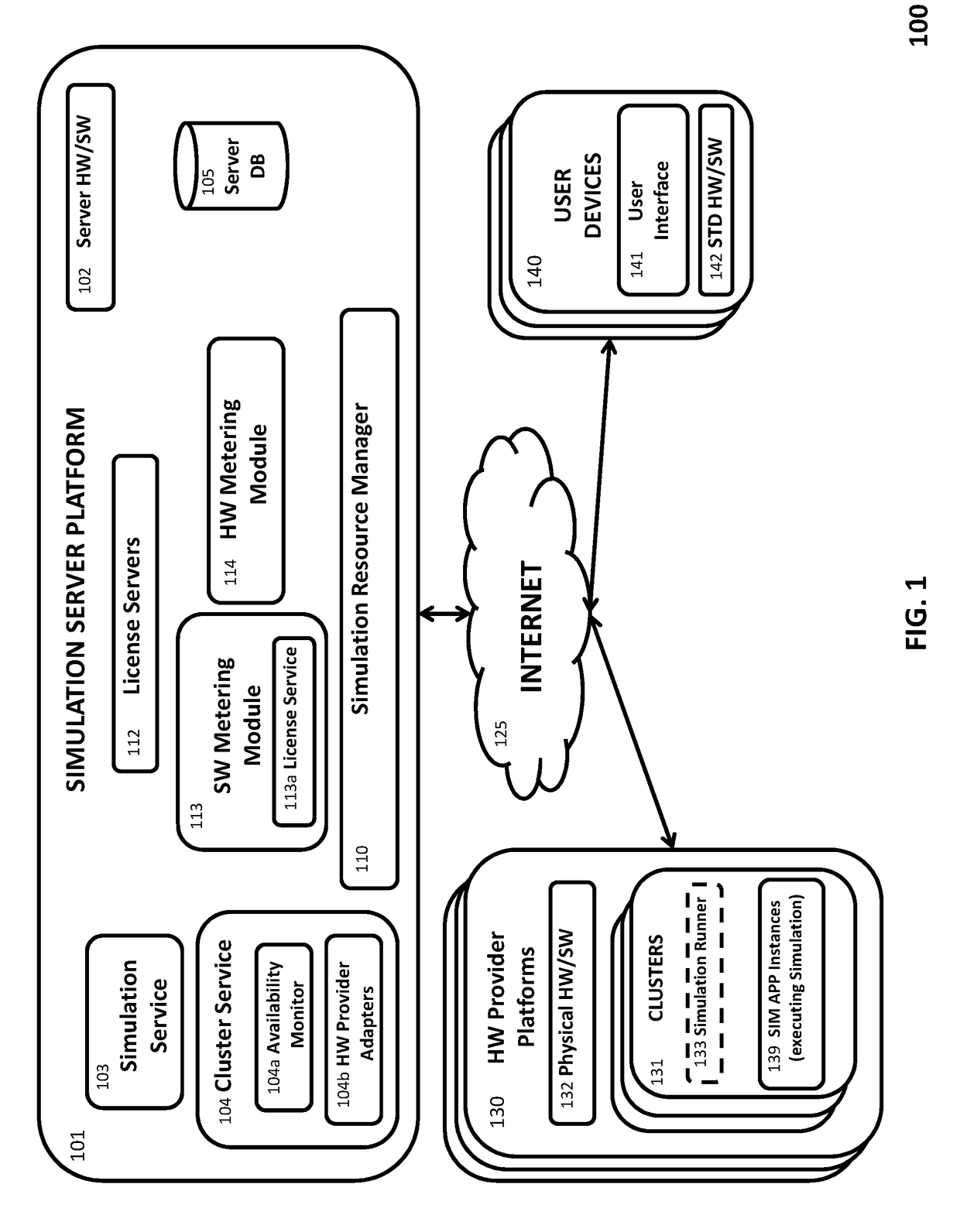Hardware providers face a “load balancing” problem in allocating usage of finite
physical computing resources across the overlapping demands of multiple customers.
Such load-balancing approaches do not, however, adequately address the
scenario in which the computing resource requirements of a task change dynamically—i.e., during the execution of the task.
In such scenarios, it is not sufficient merely to reallocate a task's computing resources among different physical servers.
While hardware providers can monitor a task's current usage of computing resources (e.g., utilization percentages of CPU, RAM, storage, network bandwidth, etc.), such “computing
resource utilization” information alone is insufficient to determine the task's optimal “future” resource requirements.
No such mechanism is provided by Amazon's EC2 Auto Scaling service, as it has no knowledge of the internal application-specific information relating to the application being executed and the particular functionality of the task being implemented.
While applications specifically designed for
parallel processing may include mechanisms to address such dependencies, they typically must be pre-configured with the “knowledge” of at least a subset of the provisioned computing resources (e.g., the number of CPU cores), making it difficult to modify such computing resources while the application is running.
As a result, there are significant limitations to this EC2 Auto Scaling approach.
One problem is that the customer must specify the conditions under which a change in computing resources is required, as well as the nature of the change (e.g., the number of EC2 Instances to be added or removed once a condition is satisfied).
However, these applications often exhibit inter-instance dependencies in which subsequent calculations, performed by one instance of an application on one CPU core, are dependent upon the results of these intermediate calculations (on the same or other CPU core, or even across physical or
virtual servers, resulting in inter-
server dependencies).
The presence of these inter-instance dependencies imposes a significant burden on customers seeking to modify the computing resources allocated to a task while it is running.
As noted above, even if the application is designed for parallel
processing, and includes a mechanism to address these inter-instance dependencies, the customer is still left with the problem of informing a running application that particular computing resources have changed—e.g., that certain CPU cores have been added or removed.
Yet, in order to implement such communications, simulation applications impose certain constraints on the simulation task, such as assuming a minimum amount of RAM or network bandwidth, or being pre-configured with a specific number of CPU cores based upon the particular characteristics of a customer's simulation data “model.”
In other words, simulation applications assume advance knowledge (through pre-configuration) of at least a subset of the computing resources on which they run, presenting a challenge for customers seeking to modify those computing resources while a simulation application is running.
However, the indirect effects of the
impact on neighboring cells over time are dependent upon the results of these initial calculations, thus resulting in inter-instance dependencies (including inter-server dependencies).
For example, an increase in disk I / O operations over time might suggest an imbalance in inter-instance or inter-server communications, possibly suggesting a need for more RAM per CPU core if such increases are predicted to continue at a particular rate.
Without that knowledge of certain computing resource specifications, the simulation application could not address the dependencies that occur when subsequent independent sub-task calculations performed by a CPU core require results from prior calculations performed by other CPU cores, perhaps on other physical or
virtual servers.
In many cases, the frequency with which simulation applications write these restart files to disk can be configured before the simulation application is executed; though it should be noted that it may be prohibitive to save the entire simulation state too frequently (e.g., due to the time and other resources required to save the entire simulation state).
It should be noted that an otherwise warranted change may be affected by the lack of a sufficiently recent restart file.
For example, users who “overspecify” a cluster of computing resources ultimately overpay for their simulation tasks, while users who “underspecify” a cluster of computing resources may find that their simulation tasks run
too slowly, or perhaps fail entirely.
 Login to View More
Login to View More  Login to View More
Login to View More 


